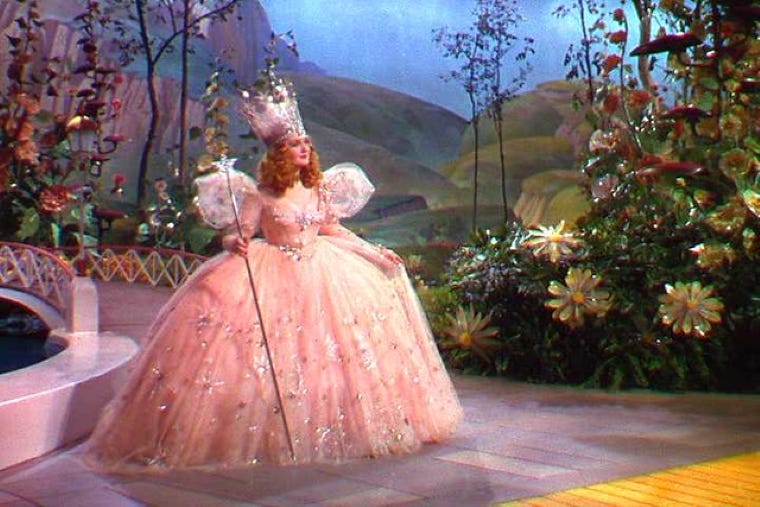Glinda The Good Witch

In the magical realm of literature and cinema. Few characters possess the enigmatic charm and enduring appeal as Glinda the Good Witch of the South. Emerging from the pages of L. Frank Baum’s timeless classic “The Wonderful Wizard of Oz,” Glinda captivates audiences with her ethereal presence, benevolent wisdom, and unwavering dedication to righteousness. Yet, beneath her shimmering gown and radiant smile lies a character layered with complexity and symbolism. Making her a fascinating subject of exploration and interpretation.
Table of Contents
ToggleJustice
First introduced in Baum’s 1900 novel. Glinda quickly became an emblem of goodness and guidance within the Land of Oz. As the protector of the Quadling Country in the southern region. She embodies virtues such as compassion, courage, and justice. Unlike her counterparts, the Wicked Witches of the East and West. Glinda’s magic is wielded not for personal gain or dominance but for the betterment of others. Her very presence exudes an aura of tranquility and hope. Offering solace to those in need and guidance to lost travelers.
Interpretation
One of the most intriguing aspects of Glinda’s character is her ambiguous nature. Despite being labeled as the “Good Witch.” Her actions and motivations often blur the lines between benevolence and manipulation. Throughout Baum’s works, Glinda demonstrates a shrewd understanding of politics and power dynamics. Utilizing her influence to orchestrate events behind the scenes. From orchestrating the defeat of the Wicked Witch of the West to guiding Dorothy on her journey to Emerald City. Glinda’s interventions shape the course of Oz’s fate. Some interpretations suggest that her manipulative tendencies stem from a desire to maintain balance and order in a world plagued by chaos and injustice.
Portrayal
Glinda serves as a symbol of feminine strength and empowerment. In an era where traditional gender roles were rigidly defined, Glinda defies expectations by occupying a position of authority and leadership. She embodies qualities typically associated with femininity—compassion, nurturing, and intuition—while also displaying traits of resilience and assertiveness. Her portrayal challenges stereotypes and showcases the multifaceted nature of womanhood, inspiring generations of readers and viewers to embrace their own inner strength and potential.
Obstacles
Beyond her character traits, Glinda also serves as a metaphorical figure within the narrative, representing the journey of self-discovery and enlightenment. Like Dorothy and her companions, who embark on a quest to find courage, heart, and wisdom, Glinda embodies the culmination of these virtues. She serves as a beacon of guidance, helping others unlock their true potential and overcome the obstacles that stand in their way. In this sense, Glinda transcends her role as a mere character and becomes a timeless symbol of hope and transformation.
Infusing
In the realm of popular culture, Glinda’s influence extends far beyond the pages of Baum’s novels. From stage adaptations to blockbuster films, her character has been reimagined and reinterpreted countless times, each iteration adding new layers of depth and complexity. Actresses such as Billie Burke and Michelle Williams have brought her to life on the silver screen, infusing the character with their own unique charm and grace.
Conclusion
Glinda the Good Witch of the South remains a beloved and iconic figure in literature and cinema. With her blend of compassion, wisdom, and enigmatic charm, she continues to captivate audiences and inspire imaginations around the world. Whether viewed as a paragon of virtue, a master manipulator, or a symbol of feminine empowerment, Glinda’s legacy endures as a testament to the enduring power of storytelling and the timeless appeal of characters who transcend the boundaries of fiction.
